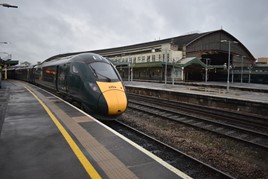For periods over the next four years, GWR trains will be unable to pass Old Oak Common, while a new station is built to connect the Great Western with HS2 services.
A key issue during testing is to ensure the customer information screens work on the diversionary route. This includes automated announcements and reservation systems, so that booked seats turn red, amber or green on departure.
The test runs, using bi-mode Hitachi Class 801 and ‘802’ trains, have all been conducted under diesel power. But the expectation is that passenger services will run on overhead wires.
The first closures are on Sunday November 17 and from December 27-29, when no main line trains will operate to or from London Paddington.
During the periods of closure, GWR expects a small number of trains to reach Euston, where GWR staff will work on the platforms. There will be one train an hour each way between Euston and South Wales, and one an hour between Euston and the South West. This will add at least 15 minutes to journey times.
Most other long-distance trains will terminate at Reading. GWR hopes to run trains between Ealing Broadway and Didcot Parkway, with a limited number of services extending to Swindon, Bristol Parkway or Cardiff Central.
There will also be periods when Paddington will be served by only two tracks, instead of the usual four, leading to reduced services.
Old Oak Common will have 14 platforms. Six HS2 platforms will be underground. A further eight will be served by existing rail services.
Old Oak Common is due to start passenger services in 2030.
Pending a decision about extending HS2 to Euston as originally planned, it will become the terminus of the high-speed line. It will be the main interchange between HS2 and Elizabeth line services into central London or Heathrow Airport.
No decision has yet been taken about GWR services calling at Old Oak Common.
GWR services will have to divert to Euston for periods in each year from 2025 to 2028. And for much of that period, daily services will have to run through the area at a reduced speed of 60mph, adding a minute and a half to most journeys.

















Login to comment
Comments
No comments have been made yet.